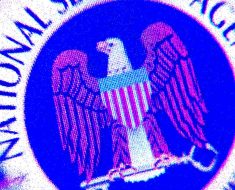As ChatGPT’s first birthday approaches, presents are rolling in for the large language model that rocked the world. From President Joe Biden comes an oversized “Executive Order on the Safe, Secure, and Trustworthy Development and Use of Artificial Intelligence.” And UK prime minister Rishi Sunak threw a party with a cool extinction-of-the-human-race theme, wrapped up with a 28-country agreement (counting the EU as a single country) promising international cooperation to develop AI responsibly. Happy birthday!
Before anyone gets too excited, let’s remember that it has been over half a century since credible studies predicted disastrous climate change. Now that the water is literally lapping at our feet and heat is making whole chunks of civilization uninhabitable, the international order has hardly made a dent in the gigatons of fossil fuel carbon dioxide spewing into the atmosphere. The United States has just installed a climate denier as the second in line to the presidency. Will AI regulation progress any better?
There’s some reason to think so. In contrast to the climate issue, where a multitrillion-dollar industry mounted an all-out campaign to discredit the threats and thwart necessary measures to cut carbon, the big powers of AI seem to be begging for regulation. They surely have their own interests at heart, but at least there’s an acceptance that rules are needed. Also, unlike the case with the climate, governments are taking seriously the threats to AI relatively early in the technology’s development. Both the Biden plan and the international agreement represent commendably serious efforts to handle AI before it handles us.
Given that, it almost seems petty to nitpick about the actual content. But I will anyway. Let’s start with Biden’s executive order. I read all 19,811 words of government-speak, so you won’t have to. By the end, I was jonesing for Dramamine. How does the president intend to encourage the benefits of AI while taming its dark side? By unleashing a human wave of bureaucracy. The document wantonly calls for the creation of new committees, working groups, boards, and task forces. There’s also a consistent call to add AI oversight to the tasks of current civil servants and political appointees.
Among the things the document lacks are a firm legal backing for all the regulations and mandates that may result from the plan: Executive orders are often overturned by the courts or superseded by Congress, which is contemplating its own AI regulation. (Although, don’t hold your breath, as a government shutdown looms.) And many of Biden’s solutions depend on self-regulation by the industry that’s under examination—whose big powers had substantial input into the initiative.
You can’t fault Biden’s order for a lack of breadth. Pretty much every AI hot button is dealt with in some way, if only to make a vow to come up with solutions later. (That’s how it handles the tricky issue of generative AI and copyright.) Overall, it’s a stunning commitment to mobilize government bureaucracy to grapple with every worrisome aspect of a new class of technology, including ones most of us never thought of. In paragraph after subparagraph, the White House orders up complicated multi-agency studies, each one involving deep interaction with industry and consultation with experts. Biden’s order assigns bureaucrats to produce complicated reports as casually as some order DoorDash meals.





